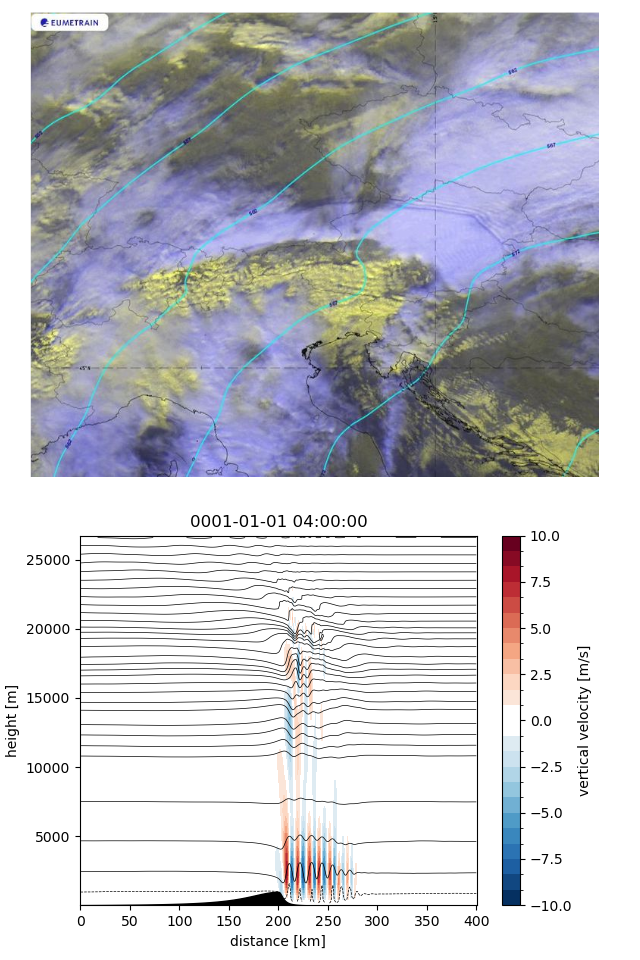Working group on Waves and Dynamics
The TEAMx working group on waves and dynamics is led by Sonja Gisinger (Deutsches Zentrum für Luft und Raumfahrt) and Petr Šácha (Charles University).
Mountain gravity waves and their induced flow fields play an important role in modifying the turbulent exchanges of momentum, heat, moisture and other atmospheric constituents in the troposphere and above. The TEAMx Waves and Dynamics Working Group aims to improve our understanding of this role, to quantify the importance of mountain wave related processes across multiple scales to turbulent transport, and to improve our capacity to represent this transport in both high-resolution research models and lower-resolution weather and climate models.
Sampling the three-dimensional variability of gravity-wave-driven turbulence across a range of scales requires the coordinated deployment of high-resolution in-situ and remote-sensing measurement platforms, both ground-based and airborne. Simulating the dynamical processes pertinent to turbulent transport requires models of sufficiently high resolution to resolve the small-scale, but important, wave motions. Initial objectives of the group include establishing the key scientific questions and a suitable methodology to address them; detailing what observations, model simulations and techniques will be required.
Examples of research questions for consideration include:
- How well can high resolution models represent mountain wave processes? In particular, the propagation and dissipation of mountain waves in the troposphere and above.
- The exchanges of heat, moisture and chemical constituents induced by certain mountain gravity wave processes, such as foehn, rotors and lee waves, are unrepresented in numerical weather and climate models. How significant are these exchanges and how can they be represented in models?
- How do mountain gravity wave processes modulate turbulence in the boundary layer and how can the heterogeneity of this turbulence be represented in model parameterisation schemes?
- The strength of wind anomalies downwind of mountains is typically underestimated by coarse resolution models due to an underrepresentation of the spatial variability in drag. Can this variability be better represented through orographic drag schemes?

